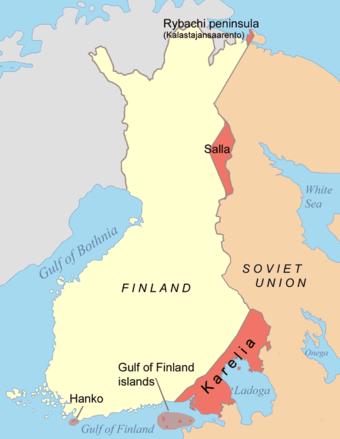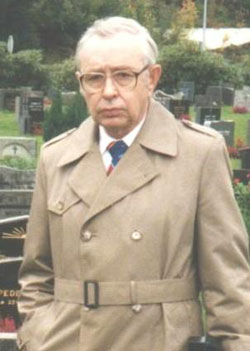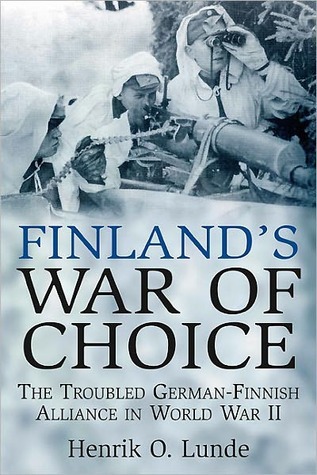Goodreads meta-data is 432 pages, rated 3.55 by 38 litizens.
Genre: History
Verdict: All trees, no forest.

In 1940 Finland fought and lost the four-month Winter War with the Soviet Union, and to preserve its independence made extensive territorial concessions to the victor. The concessions involved about 15% of Finland’s population. These people were expelled from the territory taken over by the Soviets and had to be resettled in the remainder of the country in some productive way. It was major trauma. Virtually everyone in the country was affected by it. Yet it seemed better than the fate of the other Baltic states.
Through this period Finland was a parliamentary democracy with free political parties and a free press. This is a point to stress: Finland was an electoral democracy. As important as Carl Gustaf Mannerheim was and as powerful as he became as field marshal, commander in chief, and then head of government, he worked with elected parliamentarians, rather than dictated to them.
When the Winter War ended, Finns thought that it was merely an armistice and that the Soviets would be back for more in their own time. During the Winter War, Finland had appealed for help to its fraternal democracies in Sweden, Norway, Netherlands, Denmark, France, USA, and England. None was forthcoming, though vague promises were made and some individuals — several thousand Swedes — went to Finland. The Comintern did not organise an internal brigade this time, nor did anyone else.
However, badly the Winter War initially went for the Soviet Union, and it went very badly, the result was a foregone conclusion. Thus, if and when, the Soviet Union wanted to re-open the conflict everyone in Helsinki assumed the remaining Western democracies (Sweden, USA, and GB) would again leave small, isolated, and democratic Finland to fend for itself. The precedent in 1938 had been the abandonment of democratic Czechoslovakia.
England faced Germany by November 1940 more or less alone and was unlikely to have the will or way to make a major commitment in Finland, and it would take a major commitment to check Soviet might. Sweden was locked into neutrality while it supplied Germany with vast amounts of raw materials and ball bearings for war, and as long as it shipped the goods its neutrality was accepted by the Nazis. France, Denmark, Netherlands, Norway were now off the board. The USA clung to fig leaf neutrality.
Finland was thus effectively surrounded, and alone. In that situation the enemy’s enemy is a friend. This axiom applied both to Finland and to Germany. The latter wanted to keep Finland independent both as a threat on the Soviet flank and as a source of nickel and other metals and minerals for its war machine. Finland was desperate to re-arm itself after the near complete depletion of its forces and resources in the Winter War, because the War had stripped men and women from the production of wherewithal of daily life it needed food and clothing to exist.
Moreover, Germany’s string of early victories made it seem to be the side of history. That and the Soviets miserable performance against minuscule Finland in the Winter War led both Germans and Finns to suppose that a war with the Soviet Union would be a short war in which a knock-out blow would destroy Red armies once and for all. That assumption explains the poor preparation and planning that went into the German-Finnish alliance. Six weeks was the estimate the Germans suggested to the Finns.
Accordingly, Nazi Germany and democratic Finland began negotiations for mutual assistance. There was precedent for this rapprochement when in 1917-1918 German troops had helped Finns gain independence by driving out Russians and had then supplied the White Finns in a civil war against Red Finns, even as Germany itself was collapsing. Out of that bloody and merciless civil war Finland became an electoral democracy with a free press, scheduled elections, competing political parties, and changes of government.
Back to 1940-1941, German aid to Finland was essential to the latter. It had to have help and Germany was the only available source. While for the Germans at the start aid to Finland was small and convenient but not essential, but when the preparations for the invasion of the Soviet Union developed, using Finland as a staging area to attack the northern seaports of Murmansk and Archangel, and to surround Leningrad became central in the German plans.
That the Germans would turn Finland into a battleground whether Finns liked it or not, was another assumption made in Helsinki. That is, in a war between Germany and Russia, neither of these combatants would allow a neutral Finland. Germany became the lesser evil because it was further away and there was no historic enmity with it as there was with Russia on the border. The conclusion was to try to negotiate with Germany an arrangement that preserved some Finnish degrees of freedom.
It would become a German ally – a co-belligerent – against the Soviet Union, rather than be occupied and ruled by Germans as a puppet state, an example being Croatia, and could, then perhaps set their own ground rules for co-operating with the Nazis. In the event Finland allied with Germany but only declared war on the Soviet Union and stated its war aim was the restoration of the territory lost in the 1940 Winter War. When the German attacks on the Soviet Union began Finns advanced to Finland’s 1939 borders as they were before the Winter War and stopped, dug in, and waited, while the Germans pressed on toward the sea ports in the far north and Leningrad.

In particular, the Finns took no aggressive action against Leningrad. Mannerheim was adamant that the Russians would neither forgive nor forget an assault on Leningrad, and that Russia would always be there after the war. He also flatly refused Finnish participation in the attack on the Murmansk railway. The post-War futures of Finland and Russia were fixed by geography. See the two volume biography of Mannerheim by J. O. Screen discussed elsewhere on this blog.
Officially, the Finnish government referred to this conflict as the Continuation War, a continuation of the Winter War. However, it is true that Finland troops did on occasion advance beyond the 1939 border and even approached Leningrad to create a buffer against a Soviet counter-offensive which came in 1944. During the Continuation War about 20% of the Finnish population (old and young, male and female) was in uniform. The loss of labor from industry and agriculture made Finland completely reliant on German imports of food and clothing as well as war materials.
As time went on to please its Soviet ally Great Britain did declare war on Finland, but the United States did not. N.B. Finland did not reciprocate with a declaration of war on England until Nazi pressure made supplies of food contingent on it. As things got difficult for the Germans, efforts were made to draw Finland closer to Germany – including an unwelcome personal visit by Hitler on Mannerheim’s birthday. To keep the profile of this visit as low as possible Mannerheim claimed he had to stay at the front with the army and the meeting was held in a forest well away from journalists, photographers, and passers-by. No parades. No speeches. No flags. No public pledges of unity. No crowds. No banners. No cheers.
Finnish diplomacy made semantic distinctions to create a space between Finland and Germany, and when the prophesied short war became a long one, Finland began to enlarge that space in word and deed. In word diplomatic flirtations in nearby Stockholm (with the Soviet Union, Great Britain, and the United States) increased and military cooperation became estranged (every German request was misunderstood, parsed, and squeezed and the responses were so slow that events often overtook the situation.)
During its alliance with Nazi Germany parliamentary democracy continued in Finland. It also did NOT take action against resident Jews, and on one remarkable occasion Mannerheim did leave the army to attend a ceremony in Helsinki honouring Finns killed in the war explicitly including Jews who had served the Finnish army. This occasion was reported to Hitler who flew into a rage that burned itself out.
The Continuation War lasted until 29 August 1944 when Finland sued for a separate peace with the Soviet Union. War did not end there, though, because one of the peace terms imposed by the Soviet Union was that Finland drive the German Army of Lapland in the far north out of its country. The Soviets did not offer any support, say by replacing the food and armaments the Germans had been supplying, but insisted that the Finns do it themselves. Now!
This German Lapland army numbered as many as 200,000 troops and this, so-called Lapland War went on from 15 September 1944 to April 1945 when the Germans evacuated nearly all these troops and their equipment from the Arctic north in a remarkable exploit comparable to Dunkirk, but seldom noted in Western Europe. By the way, more than half this German army consisted of Austrians.

To prevent pursuit by either the Soviets or the Finns, the retreating Germans scorched the earth in the far north. After the war Soviet pressure prevented Finland from accepting the Marshall Plan and it was years before the far north was rebuilt.
Finland is not the only country that tried to limit its inevitable association with Nazi Germany. Bulgaria confined its military operations to Greece, and so its army did not cross into Soviet territory, but that did not save it from Soviet imperialism later. That paper-state Yugoslavia had toyed with some kind of limited association but those deliberations were pre-empted by a German invasion to assist Italian adventures in the Balkans. When Hungary in 1944 tried to switch sides, the Nazis retaliated and this example caused Finns to walk softly.

In the end, Mannerheim repudiated the association with Germany and made a separate peace with the Soviet Union. The terms were hard but not as impossible as had been feared. He had acted to defend Finland from destruction rather than continue to be bound to Germany. It had been a balancing act. In 1944 Finland needed German food imports to continue to resist the Russians so as to achieve a stable front from which negotiations with the Russians could occur to abandon the Germans. Of course, both the Germans and Russians were aware of what was going on and applied pressure and threats.
Likewise to keep the German food coming the Finns had to earn it by working with the Germans, but … at a distance rather than alienate the good will of the Western allies. The line they walked was to prevent the United States from declaring war on the Finland, and in that they succeeded.

For reasons lost in the mists of time, Finland’s four-month Winter War with the Soviet Union stuck in my mind long ago and prompted me to add a stay in Helsinki when we visited Russia 2016. In preparation for the visit I read Screen’s biography of Mannerheim from which I learned a lot, and in Helsinki we went to museums and locales related to this period and more recently I have feasted on Indy Neidell’s superb Time Ghost You Tube channel. Even so I still had an appetite for more and read this book, but 80% of it concerns orders of battle and the movement of army units which is of zero (0) interest to me.

